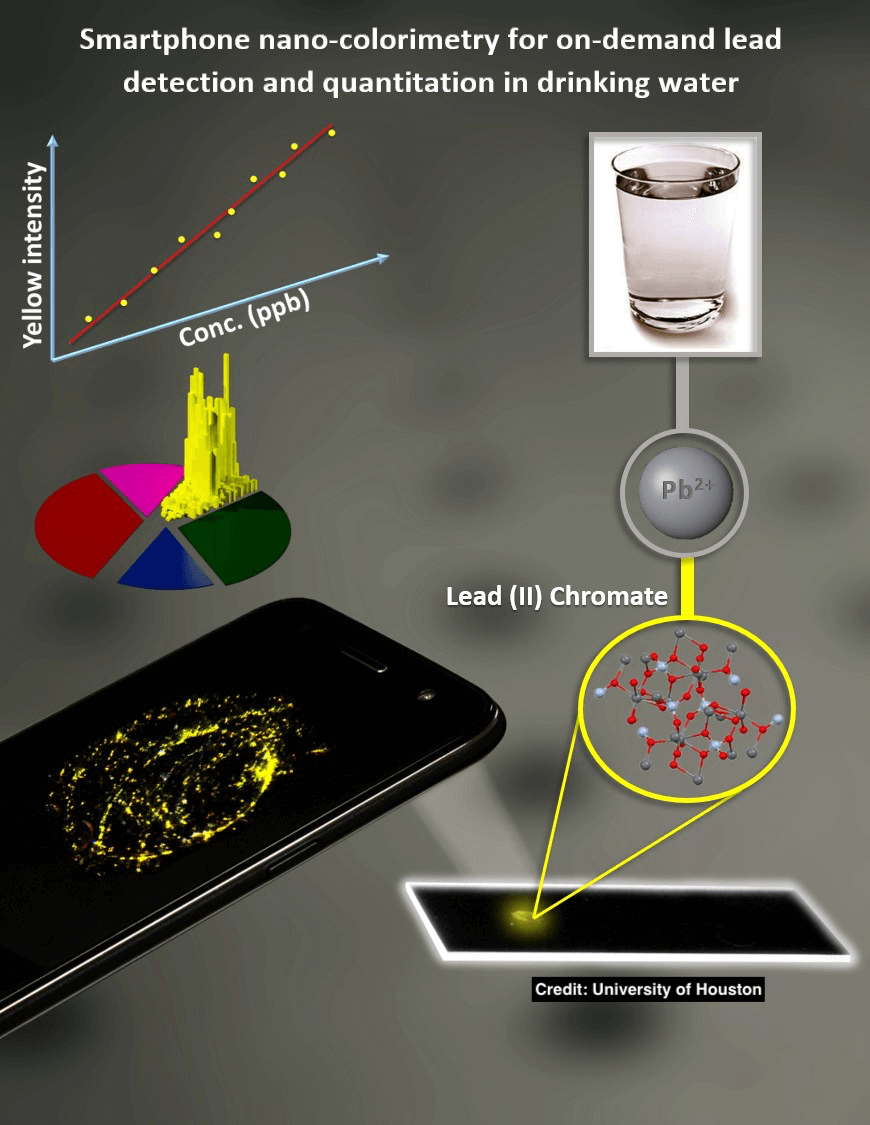Researchers from the Cullen College of Engineering at the University of Houston have developed a novel system that makes it possible to detect lead in drinking water using a smartphone.
The device is both low-cost and reusable, and may be available to consumers in the future.
“We were inspired by the water crisis that happened in Flint city and news about the lead-contaminated water in several states recently,” said Wei-Chuan Shih, an associate professor of electrical and computer engineering.
In April 2014, the city of Flint in Michigan switched its drinking water source from Lake Huron and the Detroit River to the Flint River in an effort to make drinking water more affordable in the city.
Residents quickly began noticing discolored brown or orange water coming out of their faucets, and many started to become sick. Some developed skin rashes or lost hair from showering in the water; some noticed that it tasted like metal coin.
They were experiencing symptoms of lead poisoning.
Due to substandard water treatment, the highly corrosive quality of the Flint River water, lead leached from lead water pipes into the drinking water, exposing thousands of Flint residents — including some 9,000 children — to dangerous levels of lead.
The crisis motivated Shih and his team to develop a system that would make it easy for average people to test for lead in their water system.
“One of the reasons that caused the Flint water crisis to become so big was because of the slow response by the Environmental Protection Agency (EPA),” said Shih.
“We believe these crises can quickly be prevented if the citizens can monitor the water in their own home and contact the local government for faster response and better measurement.”
The research team designed a novel lens that, when applied to a smartphone, can detect tiny particles present in contaminated water.
The smartphone system can be used to detect lead concentrations as low as 5 parts per billion (ppb) in tap water, well below the EPA standard of 15 ppb.
The test is more accurate than current tests available to consumers, which are only capable of detecting lead concentration in the parts per million (ppm) range. As a result, these tests are not very useful for detecting trace, but dangerous, amounts of lead that may be present in tap water.
Here’s how the new smartphone system works:
First, the user will add a fix amount of chromate ion (CrO₄²⁻) to lead-contaminated water. The lead ions (Pb+2) react with the chromate ion to produce lead chromate (PbCrO4), a highly insoluble and bright yellow chemical.
“At minute concentration of lead ion in the water, these yellow precipitates are very small, can be at nanoscale, and completely invisible to the naked eye,” said Shih. “However, with our smartphone set up, we can capture these tiny yellow particles in a digital image to confirm the presence of lead ions in the water.”
The key to the process is a specially-treated lens that transforms any smartphone into a highly accurate digital imaging system capable of displaying tiny particles. Shih helped develop the unique process for creating this lens in 2015.
The lens is made of a silicon-based polymer called polydimethylsiloxane. The polymer is rapidly cured on a flat surface at a high temperature. The process manipulates the shape of the polymer such that the side in contact with the flat surface flattens while the other side curves, forming a plano-convex lens.
When placed over the camera on a smartphone, the smartphone effectively becomes a microscope capable of fluorescence and dark-field microscopy. This microscope can then be used to analyze the concentration of the lead chromate nanoparticles in the water sample.
The lead concentration can be determined based on the intensity of the yellow particles in the image.
Though the test doesn’t compare to those currently used by regulators, it is very accurate compared to those that are already commercially available, according to Shih.
“For the consumer test kits, they are not designed for testing lead ions at ppb concentration. Their detection limit is in the ppm range,” he said. “They also only offer qualitative measurement. In both aspects, our smartphone test is better.”
Shih also noted that the main method used by regulators, a process called inductively coupled plasma mass spectrometry (ICP-MS), is much more accurate. However, he explained, the new smartphone test produces results faster, requires fewer samples, is cheaper, and is more portable, so it makes much more sense for consumer use.
The smartphone system is not yet available for sale, but the team has plans to develop it for the consumer market, Shih said. He believes the price could be as low as $100.




